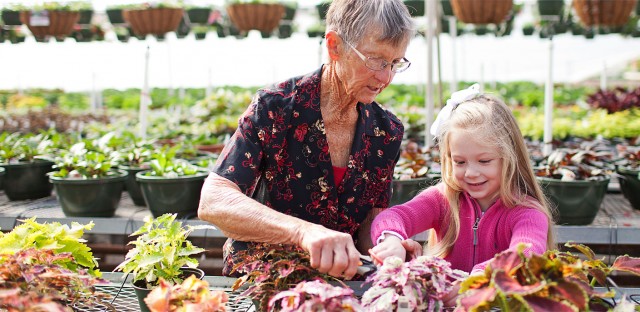Creating a Living Fence for the Birds
With summer days past, we are anticipating shorter days, cooler weather and leaves crackling under our every step. While we prepare to settle in for the winter months ahead, why not consider planting a living fence this fall? We all know that fall is the best time of year to plant trees and shrubs, not to mention it is more green as cooler days don’t require a frequent water schedule. What is a living fence? Simply put, a living fence is any grouping of plant material that forms the shape of a fence, if you will. Living fences, if evergreen, also perform double duty as serving as a screen from neighbors. Not to mention, our feathered friends benefit greatly from this landscape feature!
Obviously, this type of “fence” won’t keep critters out of your yard, or your beloved pets in your yard, but it will help block neighbors and noise, thus making your yard a more peaceful, private sanctuary. All the while, you will be creating a sanctuary for the birds… everybody wins! You see, birds have four basic needs: food, water, cover and a nesting site to raise their young. Depending on the types of plants you choose, you can provide some of these just by a few simple additions to your landscape.
Plants with berries, such as wax myrtles, pyracantha, beautyberry, nandina, holly, dogwood, juniper etc. not only add a splash of color during the drab winter months, they also provide food for the birds when other sources may be hard to find.Berryproducing plants, such as blueberry, blackberry, raspberry, etc. also provide a nice food source for the birds during warmer months, but you probably would want to keep those for yourself! Evergreen plants, such as Chindo Viburnum, Arborvitae, Cotoneaster (some are evergreen others are not) and Chinese privet provide cover for the birds year round (and some even provide berries!), while keeping your yard private at the same time! If they happen to be planted next to a privacy fence they will provide added protection to the birds, acting as a shield from strong winds and rain. Not to mention, they create a good “hiding place” for birds from their predators.
In my landscape, we have one row of wax myrtles, which creates a nice hedge. We do not trim it too much, other than to encourage growth to make it fuller; we prefer the more natural, free form look in our yard. These wax myrtles constantly have a flutter of activity as the birds use them as cover and as a food source when berries are available. On the backside of our property, we have planted a couple of other evergreens, arborvitae for some height, chindo viburnums and of course sweet olive for their bushiness and lovely aroma throughout the year. Again, these serve as a great source of cover for birds as they visit our nearby feeders and houses.
While trees and shrubs act as the backbone of your living fence, let’s not forget about perennials and annuals. Many perennials, such as bee balm, echninacea, black eyed susans, (the list could go on forever) serve as a source of nectar/seeds for both birds and butterflies alike. Same goes for annuals; annual lantana, pentas, heliotrope, shrimp plant, to name a few, are all wonderful additions during warmer months. If space permits (and you have something for them to climb on) why not add a vine or two to the mix? Many vines, such as honeysuckle and trumpet creeper are great sources of nectar for our friends of flight, such as hummingbirds and butterflies. In my yard I’ve included some black eyed susans, yarrow, cannas, echinacea, verbena, firecracker vine, pineapple sage and butterfly weed. We’ve also included a trumpet vine, that is climbing up an old pine tree. These perennials look lovely during the warmer months and make our yard more bird/butterfly friendly. Simply incorporate your perennials and annuals in front of the trees and shrubs of your living fence to add year round interest (allowing room for your trees and shrubs to grow, of course).
The hardest part about creating a living fence, by far, is plant selection. Many plants will attract birds to your yard, it really depends on your style and, most importantly, the sun exposure where your fence will be. Keep an eye on the area where you would like to make your additions, noting how many hours and during what time of the day the sun will be on your new plants. Doing so will help ensure you choose the right plants for your yard, thus planting success.
With a little observation and elbow grease, you can have a private yard that is bird friendly and low maintenance. Never did I imagine when we started to plant in our backyard that we would enjoy such a flutter of activity. Once we caught the bird bug, we couldn’t stop; from trees and shrubs to feeders, nest boxes and a birdbath, our backyard has become our own private sanctuary, built for the birds.
Stop byFairviewand let our experts help you select plants that will attract birds to your yard!
Happy Bird Gardening!
Heather W.
FairviewGreenhouse & GardenCenter




